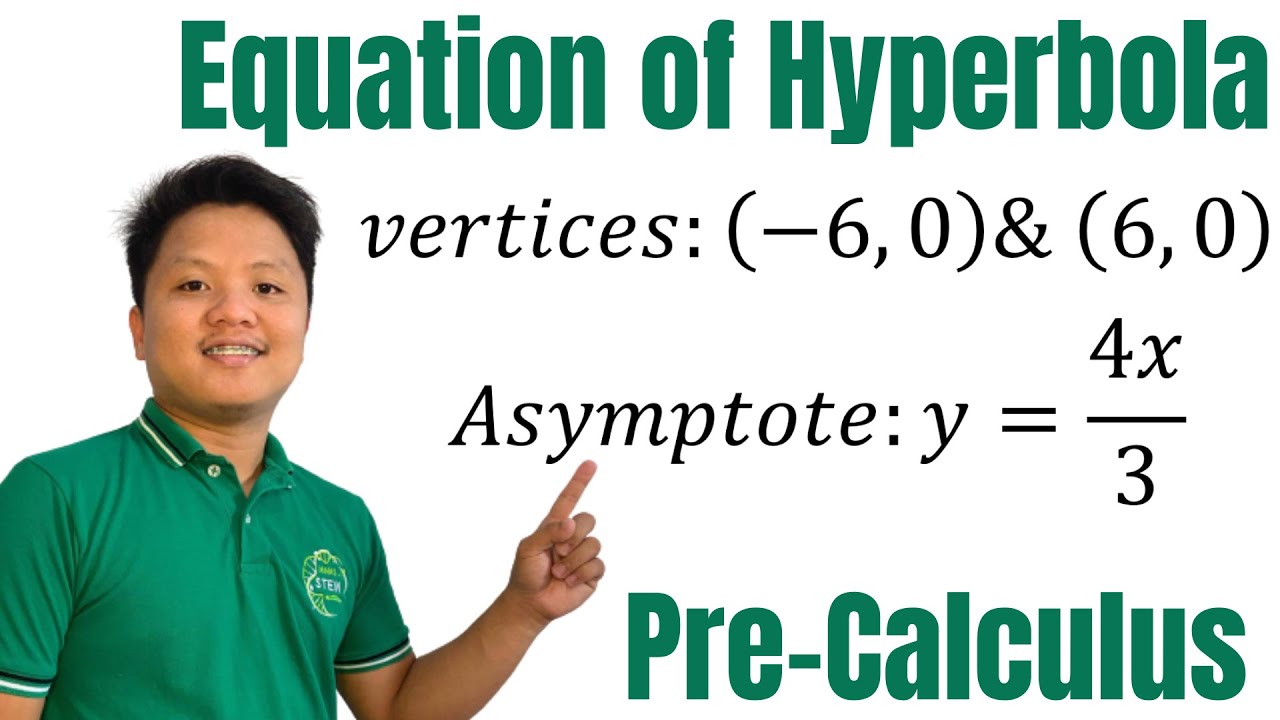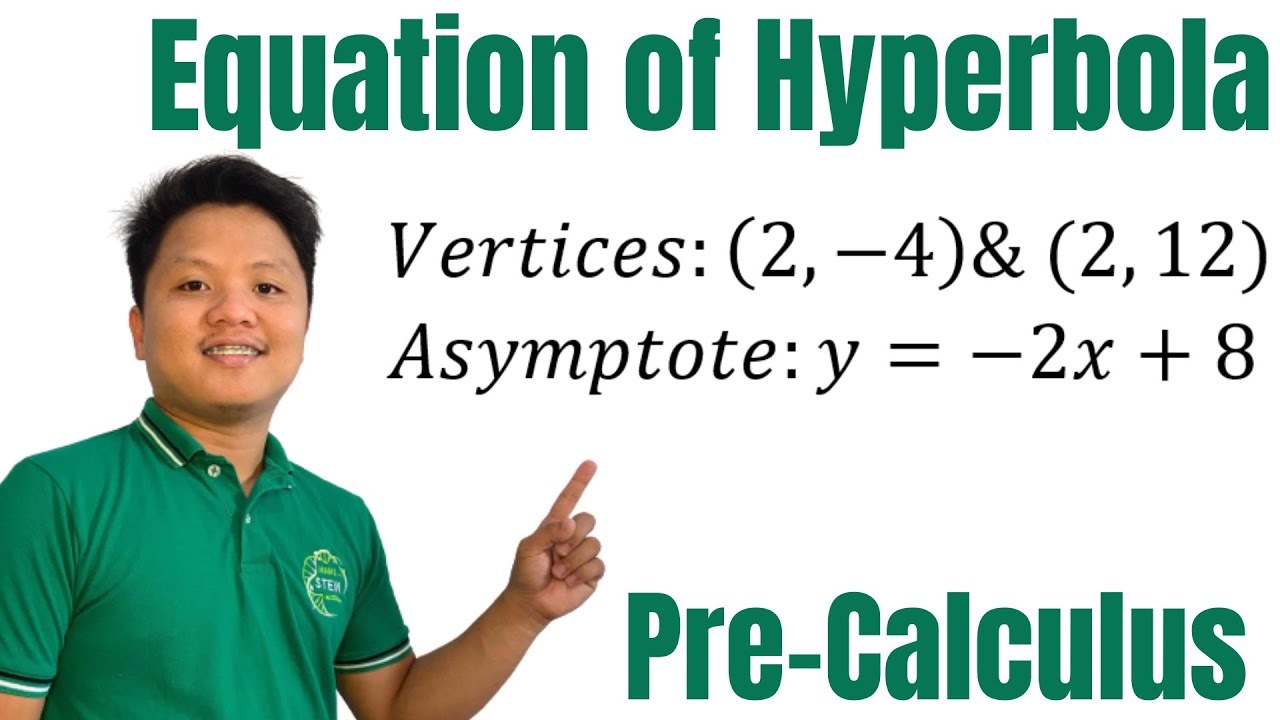How to find the equation of an ellipse given foci and vertices | @ProfD
TLDRIn this educational video, Prof D demonstrates how to derive the equation of an ellipse given its vertices and foci. The example provided has vertices at (±8, 0) and foci at (±5, 0), indicating a horizontally oriented major axis. The process involves calculating the semi-major axis (a) and semi-minor axis (b) using the distances of the vertices and foci. The formula \( \frac{x^2}{a^2} + \frac{y^2}{b^2} = 1 \) is then applied to find the ellipse's equation, resulting in \( \frac{x^2}{64} + \frac{y^2}{39} = 1 \). The video concludes with an invitation for viewers to ask questions or seek clarifications in the comments section.
Takeaways
- 📚 The video is a tutorial on finding the equation of an ellipse given its vertices and foci.
- 📍 The vertices provided are (±8, 0) and (±5, 0), indicating the major and minor axes of the ellipse.
- 🔍 The major axis is horizontal, which means the ellipse is oriented along the x-axis.
- 📐 The standard form of the ellipse equation is \( \frac{x^2}{a^2} + \frac{y^2}{b^2} = 1 \), where \( a \) is the semi-major axis and \( b \) is the semi-minor axis.
- 🧩 The semi-major axis \( a \) is determined to be 8 units, as it is the distance from the center to a vertex along the x-axis.
- 🔢 The formula for the semi-minor axis \( b \) is derived from \( c = \sqrt{a^2 - b^2} \), where \( c \) is the distance from the center to a focus.
- 🌐 The distance \( c \) is calculated using the given foci (±5, 0), leading to the equation \( 5 = \sqrt{8^2 - b^2} \).
- 📉 Solving for \( b^2 \) gives \( b^2 = 64 - 25 = 39 \), so \( b = \sqrt{39} \).
- 📝 The final equation of the ellipse is \( \frac{x^2}{64} + \frac{y^2}{39} = 1 \), using the calculated values for \( a^2 \) and \( b^2 \).
- 👨🏫 The presenter is Prof D, who encourages viewers to ask questions or seek clarifications in the comment section.
Q & A
What is the main topic of the video?
-The main topic of the video is to demonstrate how to find the equation of an ellipse given the vertices and the foci.
What are the vertices given in the video?
-The vertices given in the video are (±8, 0) and (±5, 0).
What does the orientation of the vertices indicate about the major axis of the ellipse?
-Since the vertices are aligned horizontally, it indicates that the major axis of the ellipse is horizontal.
What is the general form of the equation of an ellipse?
-The general form of the equation of an ellipse is \( \frac{x^2}{a^2} + \frac{y^2}{b^2} = 1 \).
How is the value of 'a' determined in the equation of an ellipse?
-The value of 'a' is determined by the distance from the center of the ellipse to one of its vertices along the major axis.
What is the relationship between 'a', 'b', and 'c' in an ellipse?
-In an ellipse, 'c' is the distance from the center to a focus, and it is calculated using the formula \( c = \sqrt{a^2 - b^2} \).
How do you find the value of 'b' in the equation of an ellipse?
-The value of 'b' can be found using the relationship \( b^2 = a^2 - c^2 \).
What is the final equation of the ellipse in the video?
-The final equation of the ellipse is \( \frac{x^2}{64} + \frac{y^2}{39} = 1 \).
What is the role of 'a' and 'b' in the final equation of the ellipse?
-In the final equation, 'a' is the semi-major axis and 'b' is the semi-minor axis of the ellipse.
Who is the presenter of the video?
-The presenter of the video is Prof D.
How can viewers ask questions or seek clarifications after watching the video?
-Viewers can ask questions or seek clarifications by posting them in the comment section below the video.
Outlines
📐 Finding the Equation of an Ellipse
In this video, the instructor explains how to find the equation of an ellipse given its vertices and foci. The vertices are at (8, 0) and (-8, 0), and the foci are at (5, 0) and (-5, 0). The major axis is horizontal, indicating a horizontal ellipse. The formula used involves identifying the values of 'a' and 'b' from the vertices and foci. The steps include calculating 'a' and 'b', solving for 'b' using the equation c² = a² - b², and substituting the values back into the standard form of the ellipse equation. The final equation of the ellipse is x²/64 + y²/39 = 1.
🔔 Conclusion and Call for Questions
The instructor wraps up the video, expressing hope that the lesson was understood. Viewers are encouraged to leave any questions or clarifications in the comments section. The instructor signs off, thanking viewers for watching and promising to see them in the next video.
Mindmap
Keywords
💡Ellipse
💡Vertices
💡Psi (ψ)
💡Cartesian Plane
💡Major Axis
💡Horizontal
💡Equation of an Ellipse
💡Semi-major Axis (a)
💡Semi-minor Axis (b)
💡Foci
💡Formula
Highlights
Introduction to finding the equation of an ellipse given vertices and psi.
Vertices are provided as positive and negative eight, zero and four.
Focus is identified as being on a horizontal line, indicating a horizontal major axis.
The equation of a horizontally oriented ellipse is introduced.
Formula for identifying the semi-major axis 'a' from vertices is explained.
The relationship between 'a', 'b', and 'c' in an ellipse is discussed.
Calculation of 'c' using the formula c = sqrt(a^2 - b^2) is shown.
Substitution of given values to find 'b' is demonstrated.
Solving for 'b' by rearranging the equation to isolate b^2.
The value of b^2 is calculated to be 39.
The semi-minor axis 'b' is found to be the square root of 39.
The general equation of the ellipse is applied with found values of 'a' and 'b'.
The final equation of the ellipse is presented as (x^2/64) + (y^2/39) = 1.
The video concludes with a summary of the ellipse's equation.
An invitation for questions or clarifications is extended to the viewers.
The video ends with a sign-off from Prof D.
Transcripts
Browse More Related Video

Find the equation of Hyperbola given vertices and asymptote

How to find the equation of Hyperbola given vertex, and the equation of asymptote

Find the equation of an ellipse given center, and the length of major and minor axes | @ProfD

PROBLEM SOLVING INVOLVING ELLIPSE

STANDARD EQUATION OF PARABOLA TO ITS GENERAL FORM

Zain does Partial Fractions
5.0 / 5 (0 votes)
Thanks for rating: